Iran & NK finally carried out the joint anti-Dotard deals which I proposed! Huat Ah!
https://www.38north.org/2017/02/melleman020317/
Iran’s Missile Test: Getting the Facts Straight on North Korea’s Cooperation
What Is Known About Iran’s Missile Test
Media reports citing US government officials claim the missile traveled about 1,000 kilometers, but its re-entry vehicle exploded before the flight was complete. It is unclear whether the explosion was the result of an accidental or a deliberate detonation. Officials did not provide details about the type of missile tested, though an anonymous Pentagon official informed Reuters that it was the same kind of missile tested in July 2016, and that the launch occurred near Semnan, a known missile-test site west of Tehran.
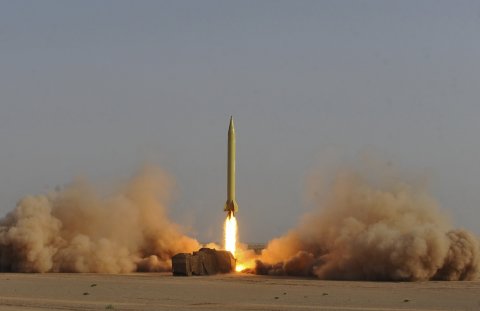 Shahab-3 missile launched in June 2011. (Photo: Iranian Students News Agency)
Shahab-3 missile launched in June 2011. (Photo: Iranian Students News Agency)
However, it remains uncertain whether the missile utilized North Korean technology or was based on the Musudan IRBM. Fox News asserted that Iran tested a BM-25 missile, built with R-27 engine technology imported from North Korea in July 2016. However, that report was not independently confirmed by other media sources. Moreover, during a briefing to journalists on February 1, 2017, a National Security Council official described the missile tested as a Shahab, a missile based on older North Korean technology.
Given these uncertainties, there are four possibilities regarding Iran’s new ballistic missile, ordered from most likely to least likely.
The first possibility is that Iran tested a Shahab-3 medium-range ballistic missile (MRBM) based on North Korea’s Nodong missile. Initially test fired by Tehran in 1998, this weapon has a range of 950 kilometers when carrying a 1,000-kg warhead. Iran has created variants of the Shahab-3 called the Ghadr, and most recently the Emad, which deliver a smaller 750-kg payload to roughly 1,600 kilometers. The Emad, the most recent design, is similar to the Ghadr, but in principle could become more accurate since fins on its base allow the warhead to alter its flight path as it re-enters the atmosphere. Perfecting the new re-entry vehicle design requires Iran to conduct a dozen or more flight tests, essentially creating a new missile.
The second possibility is that the missile tested was a variant of the Shahab-2, based on the North’s Scud-C missile that was imported by Iran from North Korea in the late-1980s and early-1990s, called the Qiam. It has a maximum range of about 700 kilometers, which would seemingly eliminate it as well as any other Scud variants as the possible subject of the recent test flight. However, North Korea unveiled and tested a one-meter diameter Scud in the summer of 2016 capable of reaching a distance of about 1,000 kilometers. There is no evidence to suggest Pyongyang has transferred one-meter Scuds to Tehran, but it is within Iran’s technical and industrial capacity to develop a clone of the North Korean missile.
Third, the recent Iranian test may have been a solid-fueled missile derived from Iran’s Sajjil program which has not been tested since 2011. A missile consisting of only the Sajjil’s first stage would have an approximate range of 1,000 kilometers and could be used to target Arab Gulf states and US forces in the region from less-vulnerable launch positions in Iran’s interior.
The final and least likely possibility is that Iran tested a missile that is essentially the same as the North Korean Musudan. This is unlikely for three reasons.
There is also no reason to believe that Iran could not test a BM-25 to maximum range—instead, if the Khorramshahr is based on the BM-25, it would have flown a very lofted trajectory. In fact, the flight paths associated with each of the possibilities vary considerably, with a possible BM-25 launch flying to the highest altitude, and the one-meter Scud taking the flattest trajectory. The countries monitoring Iranian air space would certainly be able to distinguish between a BM-25 missile test from one involving a Ghadr or Emad. A one-meter Scud missile test would differ from either a BM-25 or Ghadr/Emad test. If a single-stage missile based on Sajjil technology were tested, its flight path and acceleration profile during boost phase would be different from that of a one-meter Scud. Given these differences, it is difficult to imagine that the US government does not know the identity of the missiles tested last July and in January 2017.
Why It Is Important To Know What Was Tested
The strategic implications of Tehran’s recent missile test and the possibility of continued missile cooperation with Pyongyang vary depending on what was actually launched. If the Khorramshahr was a Shahab-3 variant based, in part, on old Nodong technology acquired from North Korea years ago, then Iran is keeping with a pattern it has pursued over the past half dozen years—prioritizing greater accuracy and enhanced military utility. However, it would not be evidence of ongoing missile cooperation with North Korea. If the test involved either a one-meter Scud or a single-stage version of the Sajjil, then Iran has refocused its missile acquisition efforts in an attempt to diversify its stockpile and increase operational flexibility. In this case, only the development of a one-meter Scud would indicate ongoing cooperation with Pyongyang. Finally, in the least likely scenario, if the Khorramshahr did employ an R-27 engine, which uses high-performance propellants, it would signify that not only does Iran continue to have close missile cooperation with North Korea, it could also develop a road-mobile, two-stage intercontinental ballistic missile capable of striking the US mainland. However, such a development would not occur overnight, and would require four or five years of observable flight tests.
—————
[1] “U.S.-RUSSIA JOINT THREAT ASSESSMENT TALKS – DECEMBER 2009,” Wikileaks, February 24, 2010, https://wikileaks.org/plusd/cables/10STATE17263_a.html.
http://www.thedrive.com/the-war-zon...-looks-a-lot-like-a-modified-north-korean-one
Iran's New Ballistic Missile Looks a Lot Like a Modified North Korean One
The Iranians showed off the new missile after fiery rhetoric from President Trump and threats to scrap the Iran Deal.
By Joseph TrevithickSeptember 23, 2017
 AP Photo/Ebrahim Noroozi
AP Photo/Ebrahim Noroozi
SHARE
Shortly after revealing the new Khorramshahr medium range ballistic missile to the public for the first time, Iran released a never before seen video showing a successful test of the weapon, but did not give a date or place for the footage. The new development will undoubtedly have an impact on whether U.S. President Donald Trump and his administration decide to scrap a deal with Iran over its controversial nuclear program, but it also underscores long-standing concerns that the Iranian authorities have been working with the North Koreans and other allies to skirt their international obligations.
Iran’s powerful Islamic Revolution Guards Corps (IRGC), a military-political organization that commands immense influence on the country’s domestic and foreign policy, unveiled the Khorramshahr during a military parade on Sept. 22, 2017 as part of the country’s annual Sacred Defense Week. The events commemorate the country’s bloody war with Iraq between 1980 and 1988.
How We Got to North Korea's Pacific Nuclear Test Threat and What Comes NextBy Joseph Trevithick Posted in The War Zone
New Syrian Missile Factories Look a Lot Like Ones in IranBy Joseph Trevithick Posted in The War Zone
North Korea Shows Off New Solid Fuel Missile Tech Amidst New SanctionsBy Joseph Trevithick Posted in The War Zone
Iran Officially Opens Expanded Space Center With Simorgh Rocket LaunchBy Joseph Trevithick Posted in The War Zone
Syria Says It Will Rain Scud Missiles On Israel If Airstrikes Don't Stop By Tyler Rogoway Posted in The War Zone
The city of Khorramshahr features heavily in Iran’s historical accounting of that conflict, as it was the site of the war’s first battle and remained under Iraqi control until 1982. The liberation marked a turning point in Iran’s favor and the new missile’s moniker is almost certainly a symbolic reference.
Brigadier General Amir Ali Hajizadeh, a senior commander from the IRGC’s Aerospace Division told reporters that the missile had a range of approximately 1,250 miles and could carry multiple warheads, suggesting it had a so-called multiple independently targetable reentry vehicle (MIRV) configuration and could strike more than one target at a time. “As it was observed, the missile has become smaller in size and more tactical and it will be operational in the near future," he added.
The missile on parade had a single, solid nose cone, making it impossible to verify the multiple warhead claims. The video footage did not show any evidence of this feature, either. If the range figure is accurate, Khorramshahr could carry a warhead or warheads anywhere in the Middle East, including Israel and Saudi Arabia, as well as hit targets in parts of Eastern Europe, East Africa, and Central Asia.
“We will promote our defensive and military power as much as we deem necessary,” Iranian President Hassan Rouhani said in a speech before the procession. “We seek no one’s permission to defend our land.”
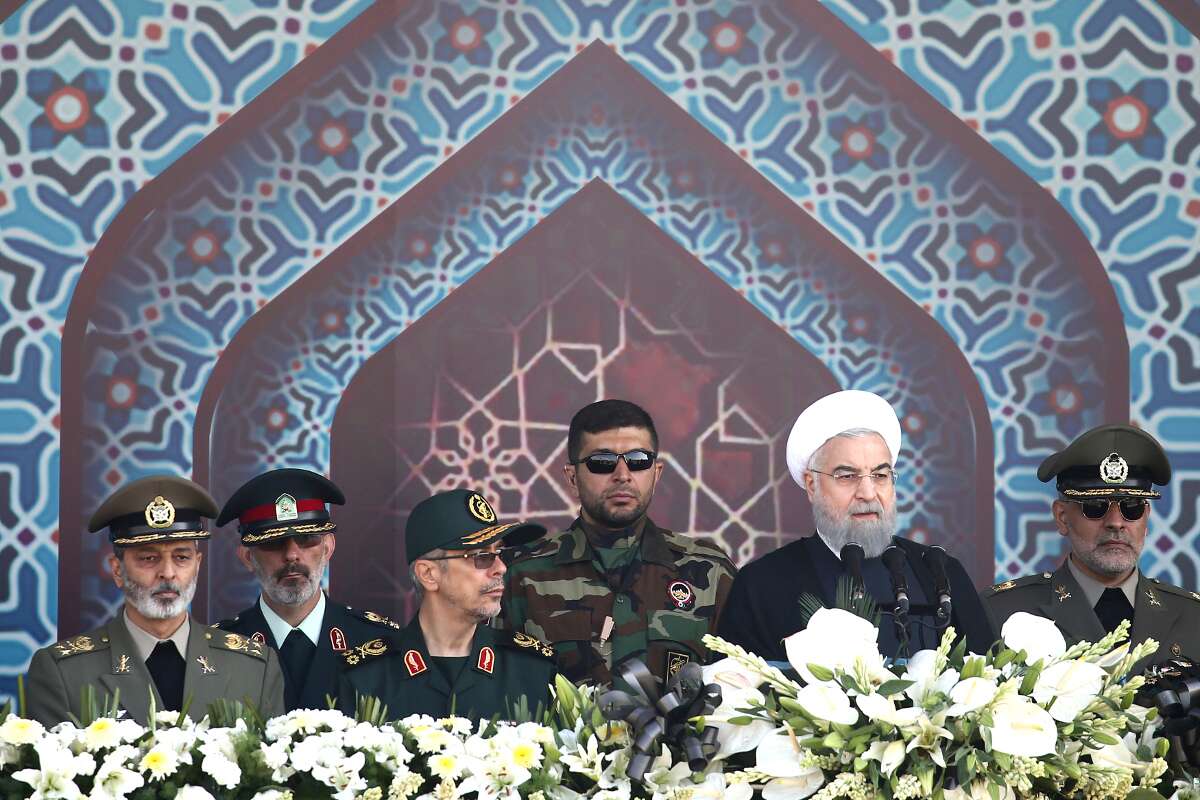
AP Photo/Ebrahim Noroozi
Iranian President Hassan Rouhani, second from right, speaks ahead of the start of the 2017 Sacred Defense Week military parade.
Rouhani’s remarks and the display of the missile itself, seem to be a response, at least in part, to fiery rhetoric from President Trump, who criticized Iran’s government during his first ever speech in front of the United Nations General Assembly and has slammed the deal over Iran’s controversial nuclear program. The Trump administration says that Iranian ballistic missile development and tests go against the spirit of that agreement.
“We cannot let a murderous regime continue these destabilizing activities while building dangerous missiles, and we cannot abide by an agreement if it provides cover for the eventual construction of a nuclear program,” Trump said in front of other world leaders and international diplomats at the United Nations on Sept. 19, 2017. “The Iran Deal was one of the worst and most one-sided transactions the United States has ever entered into. Frankly, that deal is an embarrassment to the United States, and I don’t think you’ve heard the last of it – believe me.”

AP
President Donald Trump speaks at the United Nations General Assembly on Sept. 19, 2017.
The Iran Deal, formally known as the Joint Comprehensive Plan of Action (JCPOA), does not technically cover ballistic missiles. United Nations Security Council resolutions, though, do prohibit Iran from developing such weapons, but only insofar as they can be used to deliver nuclear weapons.
Needless to say, the demonstration of the Khorramshahr has added a certain weight to calls in the United States to pull out of or otherwise reconsider the future of the JCPOA. Critics of pulling out of the arrangement say that it could only hasten Iran’s development of both newer and more advanced ballistic missiles, as well as a nuclear weapon.
However, Khorramshahr may prompt additional concerns that Iran may already be working along both of these lines with help from North Korea and other allies. Observers were quick to point out that the missile shares a number of similarities, especially in its apparent engine configuration, with the North Korean BM-25 Musudan, also known as the Hwasong-10.
Iran claims that the new missile is an entirely domestic effort, but it makes similar statements about almost every weapon system it unveils, even those that are clearly derived from foreign designs. Its existing Shahab-3 medium range ballistic missiles are a known derivative of North Korea’s earlier Hwasong-7.
In July 2016, Fox News reported that Iran had unsuccessfully tested a Musudan, citing a number of unnamed sources. This came one month after the North Korea’s first successful launch of the type.
Then, in January 2017, Fox News said that more anonymous sources had told them the Iranians had test fired a new, then unknown missile, with the name Khorramshahr. It reportedly flew approximately 600 miles with an unknown apogee before exploding. According to Reuters, a U.S. military official said this was the same type Iran had tested in July 2016. It is very possible that the video shown during the opening of Sacred Defense Week 2017 was from this test.
Separately, in July 2017, Iran formally opened the Imam Khomeini Space Center near Semnan with the launch of a Simorgh space launch vehicle, which the United States and other critics say is simply a cover for work on an intercontinental ballistic missile. This launch occurred the same a month as North Korea’s first demonstration of the Hwasong-14 intercontinental ballistic missile.
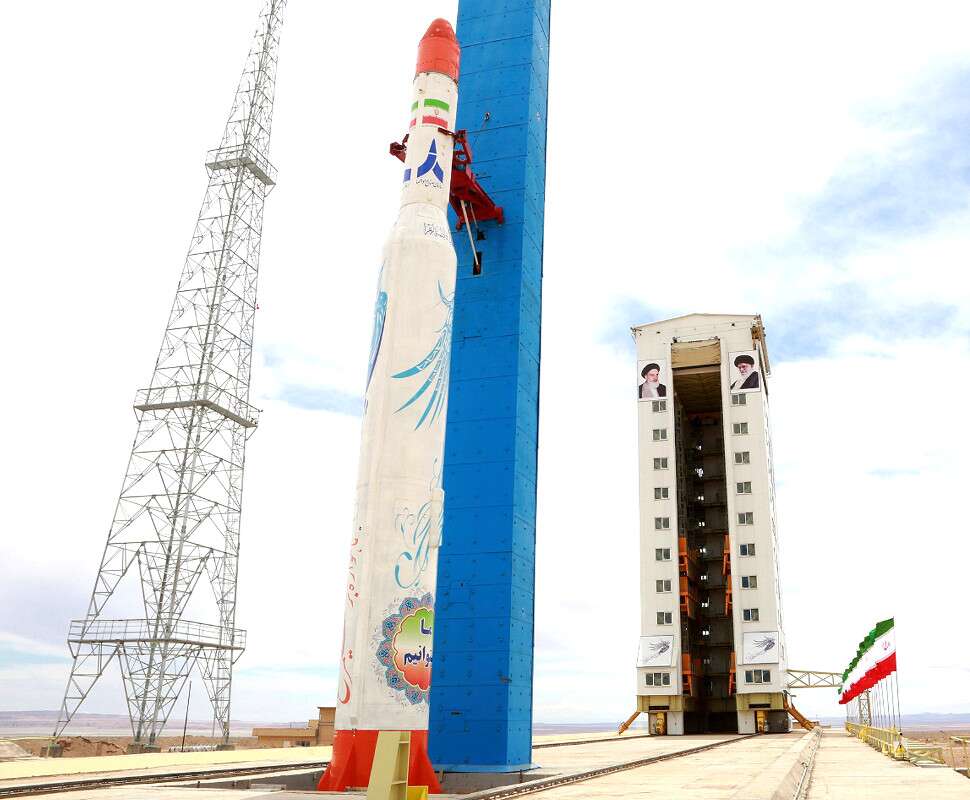
Iranian Defense Ministry via AP
Iran's Simorgh space launch vehicle at the Imam Khomeini Space Center in July 2017.
We cannot say conclusively that Iran and North Korea are actively working together on ballistic missile developments, but the timelines and past precedents heavily point to continued cooperation on advanced weapons. Though the Khorramshahr is liquid fueled, it is possible that this engagement could lead to improved solid fuel designs, which troops can set up and fire faster, similar to North Korea’s Pukguksong series.
“Iranian solid-propellant programs are also progressing,” the 2017 NASIC report noted. Iran already has a solid fuel weapon with the same estimated range as the Khorramshahr, the Sejjil.
We also know, thanks to a Freedom of Information Act request, that STRATCOM’s J321 Industrial Systems Analyst had been looking into someone’s solid fuel rocket motor development between July and December 2016. The briefing slide in question is so heavily redacted that it’s difficult to make out the exact objectives or targets of the analysis, but does mention earlier studies done on behalf of U.S. Pacific Command.
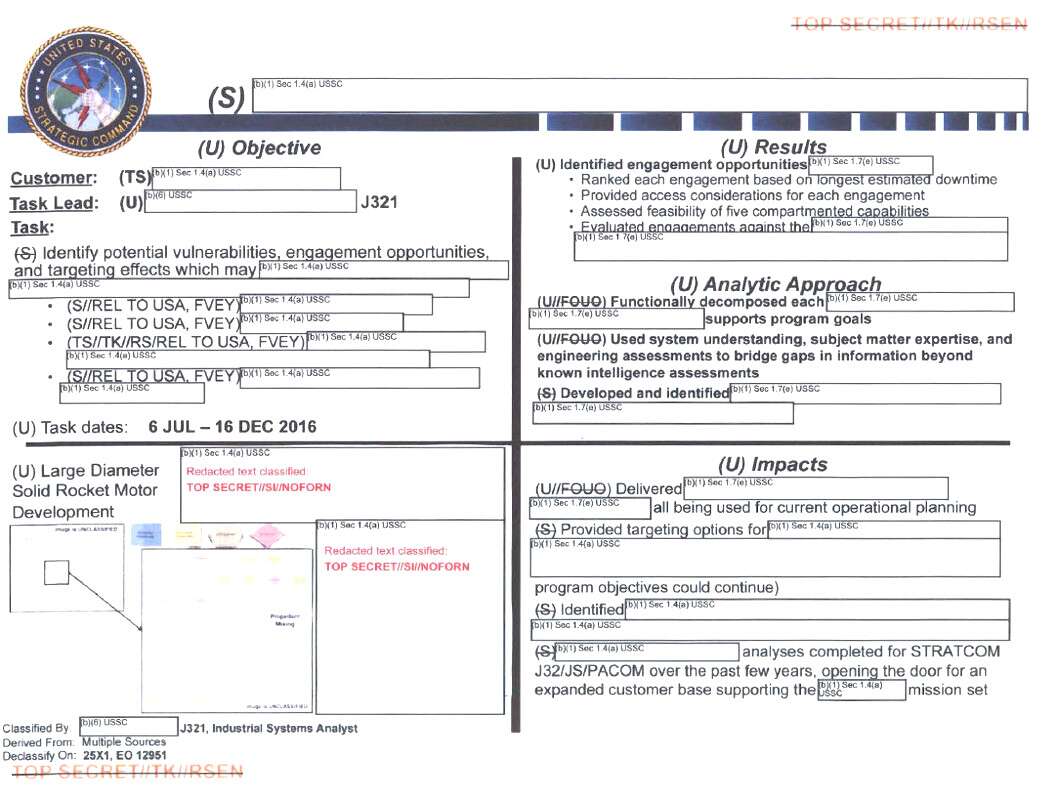
STRATCOM via FOIA
The added fear, of course, would be that if the two are working on missiles, then they could just as easily be sharing information on nuclear weapons. There has long been a concern that Iran could easily afford to halt its domestic nuclear program because it had either already completed all the necessary research or could continue it elsewhere away from the prying eyes of international inspectors.
The appearance of ballistic missile-related facilities in Syria that look similar to those Iran adds weight to the possibility that the government in Tehran has reached out to allies to help shield various advanced weapons programs for scrutiny, to support parallel developments in those countries, or both. Iran has been very open about proliferating various artillery rocket and short-range ballistic missile technology, such as the Zulfiqar missiles it fired at ISIS terrorists in June 2017, both to states like Syria and non-state actors like the Lebanese militant group Hezbollah.
“Taking a definitive stand against Trump is only the beginning of the path,” General Mohammad Ali Jafari, head of the IRGC, said after hearing Trump's comments, according to the organization's official Sepah News outlet. “What is strategically important is that America witnesses more painful responses in the actions, behavior and decisions that Iran takes in the coming months.”
Since Iran insists it is not building any nuclear weapons, it says its ballistic missile work does not fall under the terms of these resolutions. The United States has challenged this interpretation, saying that there is limited utility in long-range ballistic missiles with conventional payloads and that it makes little sense to spend the time and energy on their development without nuclear warheads.
“The facts are that Iran is operating under the agreements the we signed up for under the JCPOA,” U.S. Air Force General John Hyten, head of U.S. Strategic Command, said during a talk at the Hudson Institute event. “But at the same time they are rapidly, rapidly deploying and developing a whole series of ballistic missiles and testing ballistic missiles at all ranges that provide significant concerns to not just the United States, but our allies.”
According to an unclassified 2017 report from the U.S. Air Force’s National Air and Space Intelligence Center (NASIC), of the countries presently the United States know are working on new medium and intermediate range ballistic missiles, only Iran has not tested a nuclear device. “Iran has ambitious ballistic missile and space launch development programs and continues to attempt to increase the lethality of its ballistic missile force,” the analysts added.
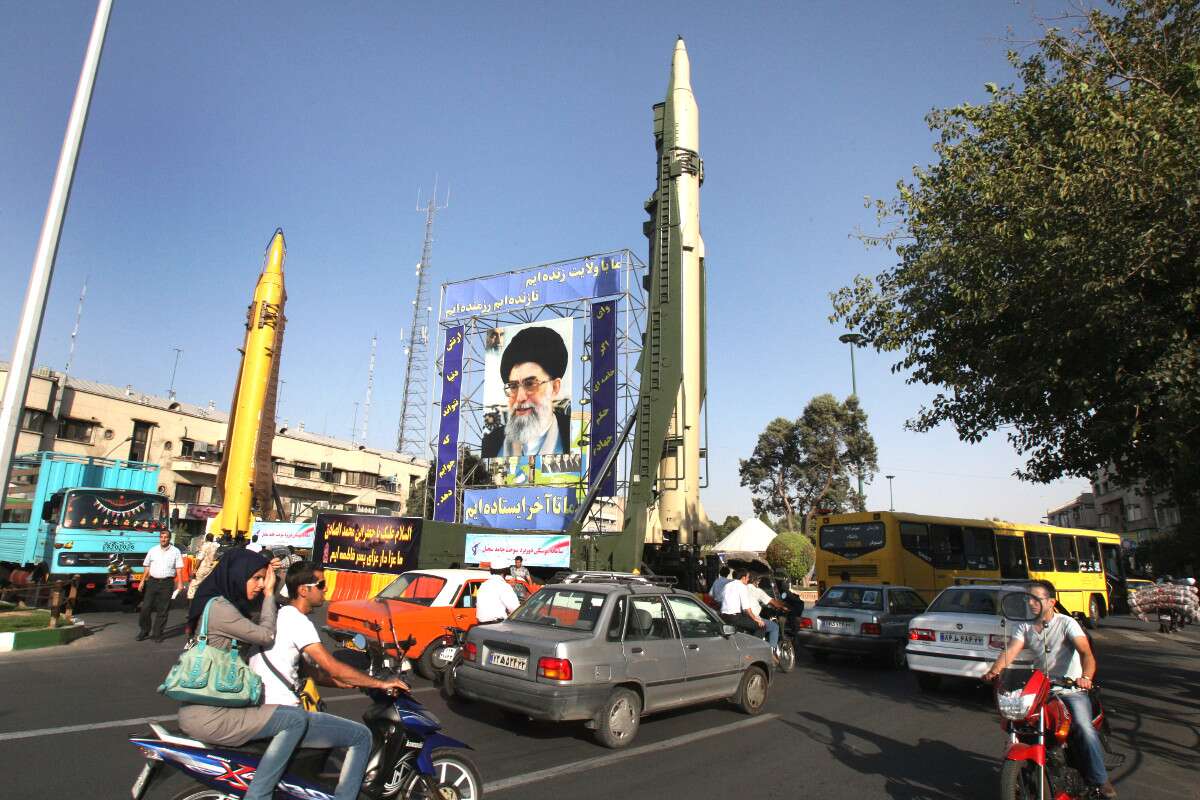
AP Photo/Vahid Salemi
A display of IRGC missiles, including a Sejjil at left, during Sacred Defense Week in 2011.
These concerns are hardly new, of course. Since Iran Deal came into effect in 2015, there have been more than 10 reported Iranian missile tests.
“The United States is deeply concerned about Iran’s recent ballistic missile launches, which are provocative and destabilizing,” then U.S. Ambassador to the United Nations Samantha Power said in March 2016 after a series of launches. “We condemn such threats against another U.N. member state and one of our closest allies,” she added in response to Iranian remarks that the tests were meant as a clear warning to Israel.
Still, the appearance of the Khorramshahr is likely to unsettle Iran’s regional opponents, including Israel and Saudi Arabia, which are both already in the process of expanding their ballistic missile defenses. On Sept. 18, 2017, the U.S. military announced it would set up its first ever formal base in Israel, which appeared to be an expansion of existing missile defense cooperation.
Israel is also increasingly worried about Hezbollah’s capabilities as the group receives more Iranian and Syrian support to continue operations against rebels fighting the government of dictator Bashar Al Assad in Syria. On Sept. 22, 2017, Israeli aircraft attacked a site the group controlled near the airport in Damascus, the latest intervention in that country by the Israeli Air Force.
Earlier in September 2017, Israel also struck the Syrian Scientific Studies and Researchers Center. Those most reporting focused on this organization’s work on Syria’s chemical weapons program, it is also linked to ballistic missile work.
It seems very possible that we could see a flurry of ballistic missile developments in Iran and among its allies in the near future. It also will be interesting to see if new Iran announcements continue to come soon after similar displays in North Korea.
Note: Many news outlets reported the launch shown in the video the Iranians released during Sacred Defense Week 2017 as new, but it remains unclear whether or not this was the case. In their English language reporting, Iranian media outlets did not frame this as a new test, suggesting that it could have been footage of the January 2017 launch. As of Sept. 23, 2017, neither the Pentagon nor the U.S. State Department had released a statement about any new launch, either. Regardless, it was a clear demonstration that the missile has flown successfully on at least one occasion.
http://www.thedrive.com/the-war-zon...ssiles-can-fly-but-also-that-it-doesnt-matter
Iran Says It's Limited How Far Its Missiles Can Fly, but Also That it Doesn't Matter
In the same breadth, a top official made threats and said the country could easily scrap the self-imposed restrictions.
By Joseph TrevithickNovember 1, 2017
 FARS
FARS
SHARE
Iran has announced that the country’s Supreme Leader Ayatollah Seyyed Ali Khamenei has limited the range of its ballistic missiles to a maximum of approximately 1,240 miles. The move seems intended to reinforce the Iranian government’s claim that the controversial weapons program is for defensive purposes only, but seems unlikely to mollify its top international critics, including the United States and Saudi Arabia, especially since the Iranian government has already suggested it could quickly reverse course and drop the restrictions.
Major General Mohammad Ali Jafari, head of Iran’s Islamic Revolutionary Guards Corps (IRGC), disclosed the range limits during a conference in Tehran entitled “A World Without Terror” on Oct. 31, 2017. The IRGC, which the United States formally labeled a terrorist group earlier in October as part of U.S. President Donald Trump’s new Iran policy, is a powerful quasi-military and economic entity that answers directly to Khamenei and leads the country’s ballistic missile efforts.
An Explainer On How The Trump Administration Just Changed US Policy Toward IranBy Joseph Trevithick Posted in The War Zone
Iran's New Ballistic Missile Looks a Lot Like a Modified North Korean OneBy Joseph Trevithick Posted in The War Zone
New Syrian Missile Factories Look a Lot Like Ones in IranBy Joseph Trevithick Posted in The War Zone
Iran Officially Opens Expanded Space Center With Simorgh Rocket LaunchBy Joseph Trevithick Posted in The War Zone
Iran Launched An Unprecedented Ballistic Missile Attack On Syrian CityBy Tyler Rogoway Posted in The War Zone
“There is the capability to increase this range, but it is sufficient for now as the Americans are present within … [this] radius around the country, and would get a response in the case of any invasion,” he added. “The Americans fear the consequences of a war with Iran, and are well aware that they would be the losers if such a war breaks out.”
Jafari almost certainly singled out the United States in his comments in response to the Trump Administration’s hard line stance toward Iran. On Oct. 13, 2017, the U.S. government unveiled a new policy agenda aimed at Iran, which, along with designated the IRGC as a terrorist group, specifically called out Iran’s ballistic missile efforts.
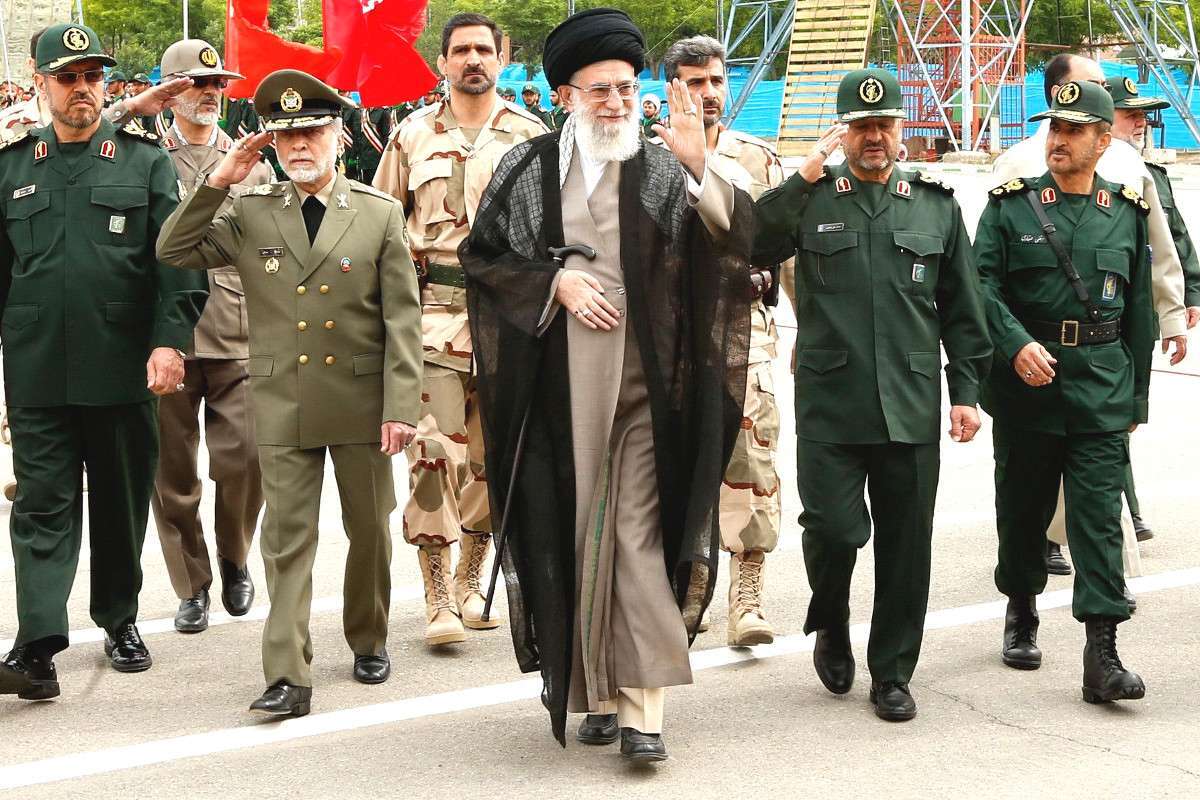
Sipa via AP
Iran's Supreme Leader Ayatollah Seyyed Ali Khamenei, center, and IRGC Major General Mohammad Ali Jafari, to his left, in 2014.
“We will address the regime’s proliferation of missiles and weapons that threaten its neighbors, global trade, and freedom of navigation,” said in a speech detailing his administration’s plans. “I urge our allies to join us in taking strong actions to curb Iran's continued dangerous and destabilizing behavior, including thorough sanctions outside the Iran Deal that target the regime's ballistic missile program.”
Iran’s missiles have long been a major point of contention between the country and the United States. Opponents of the Iran Deal over the country’s nuclear program, formally called the Joint Comprehensive Plan of Action (JCPOA), have long criticized that arrangement for not including any provisions specifically aimed at curtailing those developments.
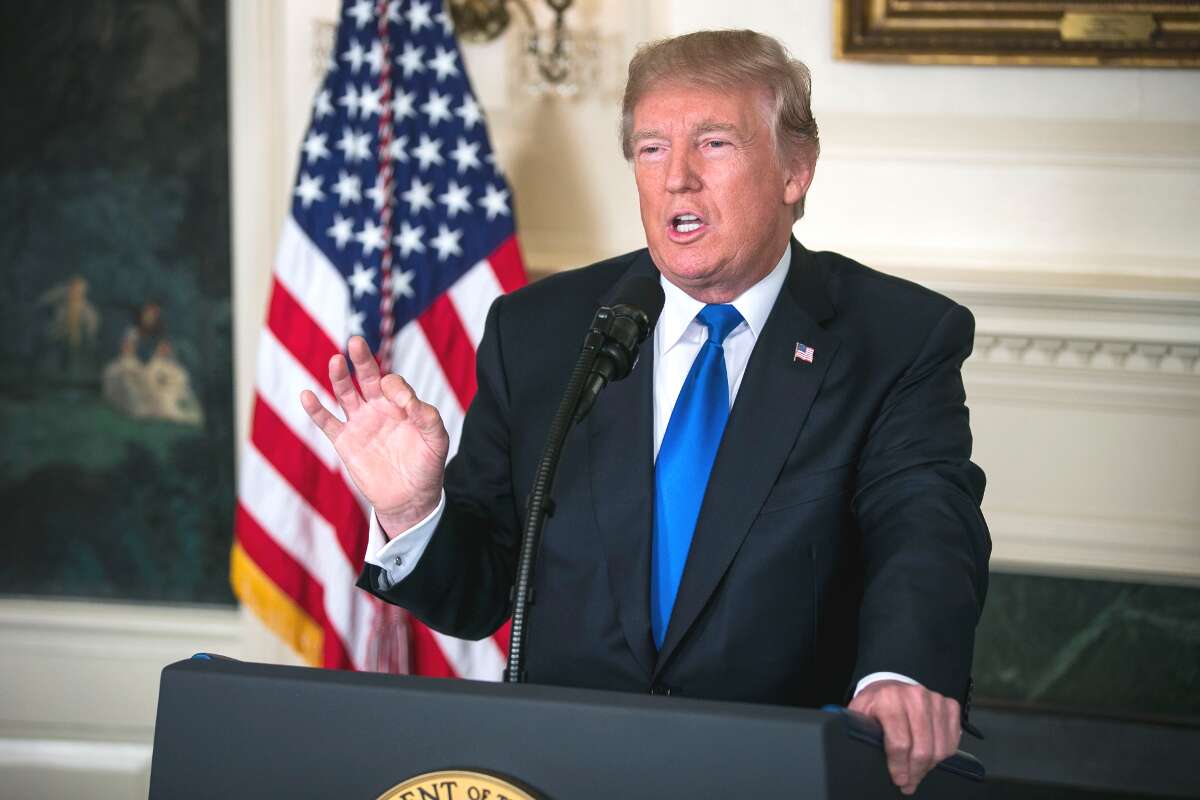
Al Drago/Picture-Alliance/DPA/AP
President Trump describes his new Iran policy on Oct. 13, 2017.
During the campaign and after winning the election, Trump has repeatedly slammed the deal personally, calling it “one of the most incompetently drawn deals I've ever seen” in an interview with Fox News’ Sean Hannity earlier in October 2017. “The Trump Administration will not repeat these mistakes,” a fact sheet the White House released to go along with his Iran policy speech stated bluntly.
The United States says that continued missile tests are inherently provocative and therefore violate the “spirit” of the deal, which was supposed to promote “regional and international peace and security.” In January 2017, Iran tested its latest design, called Khorramshahr, which has elements that appear similar to North Korea’s BM-25 Musudan and reportedly has a range that meets the official limitations, before officially revealing it to the public nine months later.
Iran has already developed a host of other, shorter range ballistic missiles and large, hardened tunnel networks to protect them from attack. In June 2017, Iranian forces launched four smaller Zulfiqars into Syria, nominally in retaliation for ISIS attacks in Tehran, but also as a clear demonstration of the capability to other potential opponents.
Iran counters these complaints by insisting its missile development program is purely defensive in nature, helping guard against the aggression of its opponents, chiefly the United State, Israel, and Saudi Arabia. Jafari’s comments in October 2017 effectively reiterated and added additional weight to this position.
In line with the Trump administration’s new Iran policy, Congress did approve additional sanctions targeting the country’s ballistic missile development efforts earlier in October 2017. The Iranian government swiftly and unsurprisingly slammed the decision.
There are United Nations Security Council Resolutions that do specifically prohibit Iran from developing and testing long-range ballistic missiles, but specifically in the context of work on a delivery platform for a nuclear weapon. In 2005, however, Iran formally announced that Ayatollah Khamenei had forbidden the development or production of these weapons of mass destruction in a fatwa, an official Islamic decree.
As such, Iranian authorities say that it is impossible for anyone to claim that their missile developments are tangentially related to a nuclear weapons program, covert or otherwise. The United States and its allies have implicitly disagreed, arguing that long-range ballistic missiles, especially inter-continental ballistic missiles (ICBM), have little to no value absent a nuclear warhead.
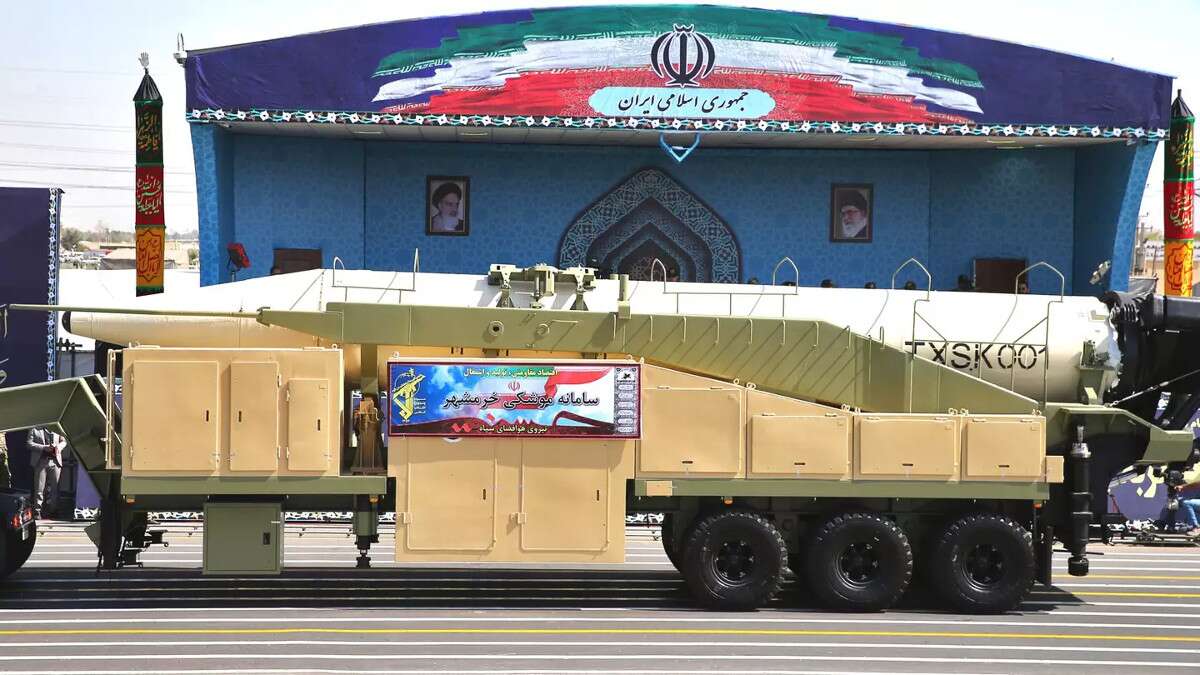
Ebrahim Noroozi/AP
Iran's Khorramshahr medium-range ballistic missile.
It is unclear whether or not Khamenei’s new missile range restrictions, which would limit Iran to what the international community defines as Medium Range Ballistic Missiles (MRBM), came in the form of another fatwa or how long they have been in place. Jafari was right to point out that these limits don’t prevent the IRGC from holding all of Israel and Saudi Arabia, as well as American military bases throughout the region, at risk.
“It is a political decision,” Michael Elleman, the senior fellow for missile defense with the International Institute for Strategic Studies told Voice of America after the announcement. “I think with the supreme leader saying it, it takes on a little more significance.”
But however official, there is no indication that these self-imposed restrictions will make the United States or its regional allies any more inclined to be conciliatory. Even in announcing them, Jafari was quick to essentially point out that Iran could increase the range of its missiles if it decided to do so.
Experts already believe that Khorramshahr has a range that exceeds these limits. North Korea’s BM-25, which it successfully test fired for the first time in June 2016, has an estimated range of approximately 2,500 miles.
“It will be interesting to see how Iran reconciles this Khorramshahr missile with the supreme leader's dictate,” Elleman added. “Iran may say, ‘Well, we're fitting it with this big warhead so we're not exceeding this limitation,’ but the modification is very simple.”
On top of that, critics have argued that the fatwa on nuclear weapons has not prevented Iran from conducting advanced research on that topic short of active development, giving it the ability to rapidly produce such a device if and when the country’s government deems it to be necessary. The same criticism could easily apply to missile development work.
Just because Iran isn’t building missiles that can fly farther than 1,240 miles, there’s nothing to suggest it wouldn’t be developing the requisite knowledge base to rapidly do so in the future. There’s also the possibility that it might use proxies to continue that development or even production. There is already significant evidence that Iran has been sharing ballistic missile technology with the Syria regime of dictator Bashar Al Assad and the Lebanese militant group Hezbollah.
And the United States has already accused the Iranian government of using its nascent space program and work on space launch vehicles as a cover for research and development into ICBMs. We don’t know for sure, but it seems unlikely that Khamenei’s missile dictum would apply to that nominally civil work.
This all begs the question of why Iran would necessarily decide to make this pronouncement at all. Earlier in October 2017, President Hassan Rouhani had already categorically dismissed the threat of additional sanctions and other U.S.-led efforts to pressure it into giving up its missiles and renegotiating the terms of the JCPOA.
“We will build, produce and stockpile any weapons of any kind that we need in order to defend ourselves and the territorial integrity of our beloved nation,” Rouhani said in a speech to the Majlis, Iran’s parliament, on Oct. 29, 2017, hard line remarks that legislators greeted with chants of “Death to America.” “We have built, are building and will continue to build missiles, and this violates no international agreements.”
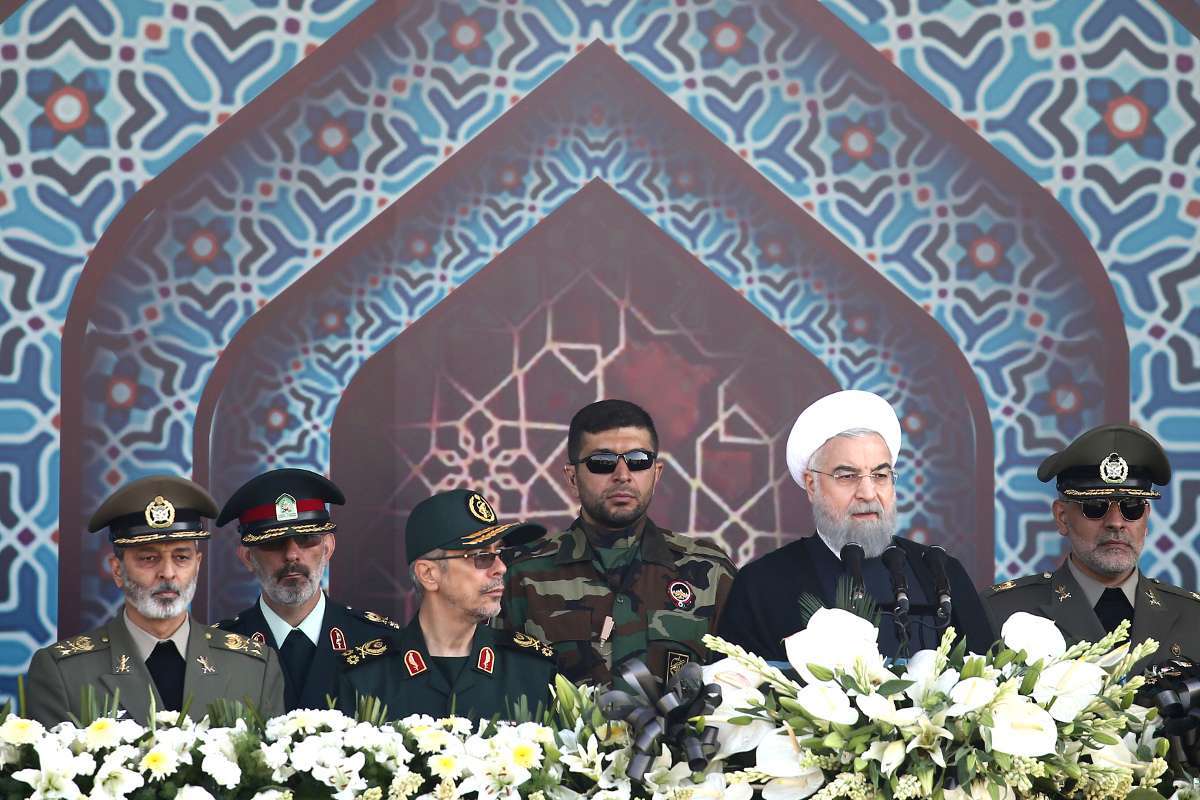
Ebrahim Noroozi/AP
Iranian President Hassan Rouhani, second from right, speaks ahead of the start of the 2017 Sacred Defense Week military parade.
This new announcement does add extra weight to the claims of a defense-focused missile project. As we’ve already noted, the United States and its allies already routinely allege Iran is saying one thing when it comes to advanced weapons programs, but actually is doing another in secret.
It could help Iran position itself as the most restrained, rational actor, especially with regards to Suadi Arabia, which is in the middle of a massive international military shopping spree. These multi-billion dollar deals include the purchase of a huge missile defense shield centered on the U.S.-made Terminal High Altitude Air Defense (THAAD) system and its long-range AN/TPY-2 radar, which the Kingdom wants specifically to guard against Iran’s growing long-range arsenal.
At the same time, Saudi officials have announced their own plans to begin a controversial nuclear power generation effort, which some fear could be a prelude to regional nuclear arms race. At a conference organized by the International Atomic Energy Agency (IAEA) on Oct. 30, 2017, Hashim bin Abdullah Yamani, head of the King Abdullah City for Atomic and Renewable Energy (KACARE), discussed plans to both enrich and process fissile material inside the country.
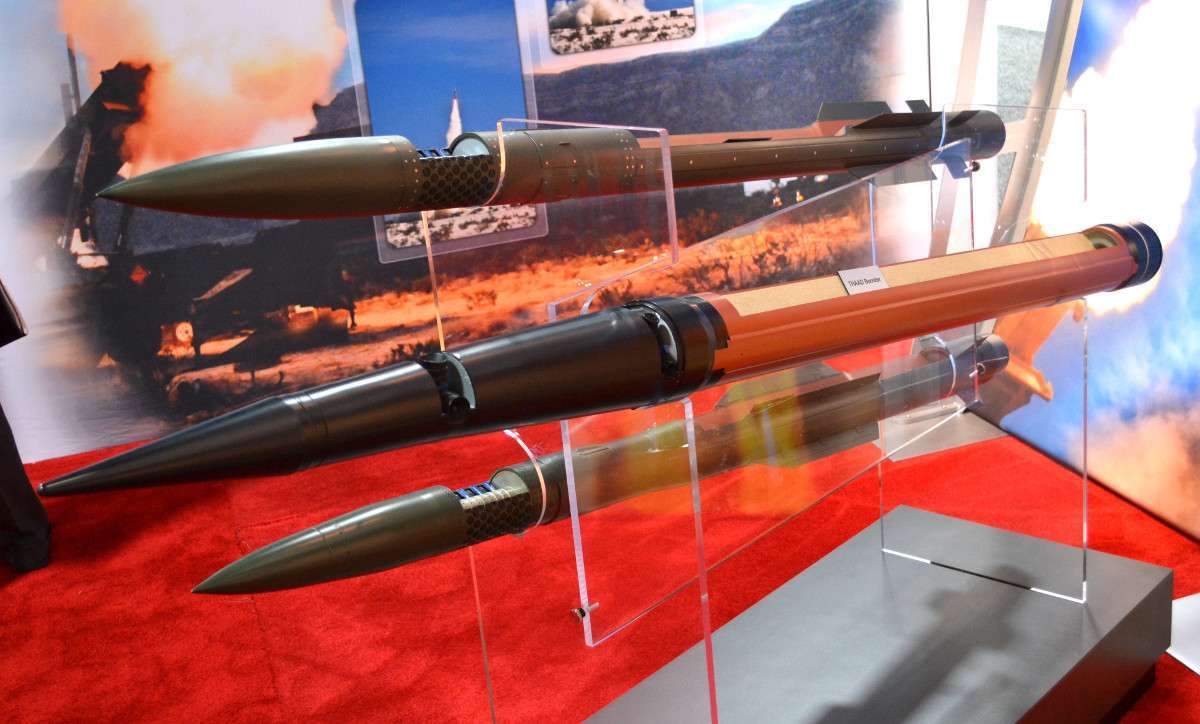
Joseph Trevithick
A model of the THAAD interceptor, in the foreground, which the Saudis expect to buy 360 of for their ballistic missile shield.
“Regarding the production of uranium in the kingdom, this is a program which is our first step towards self-sufficiency in producing nuclear fuel,” Yamani explained. “We utilize the uranium ore that has been proven to be economically efficient.”
On Oct. 31, 2017, Iranian authorities themselves broke ground on two new reactors at the Bushehr nuclear power plant complex, which they say are to help expand the country’s nuclear energy capacity. The U.S. government could easily see as a new provocation, further undermining any efforts to reduce tensions over the country’s missile programs.
Russia, which has long assisted with Iran’s nuclear power projects, is providing assistance for this new work. Iran hopes the first new reactor will go critical in seven years, with the second coming online two years after that.
This timeline just so happens to coincide with the possible sunset of various nuclear sanctions against Iran built into the Iran Deal. In 2023, whoever is President of the United States is obliged to ask Congress if it is appropriate the end US sanctions on various Iranian nuclear enterprises. In 2026, additional restrictions on Iran's ability to enrich and process fissile material could end.
With the Trump administration adamant about “fixing” the Iran Deal and Iranian authorities insisting this proposal is a non-starter, it seems unlikely that these self-imposed limits, which Iran says it can back out of at any time, will have a major impact on the geopolitical landscape.
Contact the author: [email protected]
Don't forget to sign up
https://www.38north.org/2017/02/melleman020317/
Iran’s Missile Test: Getting the Facts Straight on North Korea’s Cooperation
What Is Known About Iran’s Missile Test
Media reports citing US government officials claim the missile traveled about 1,000 kilometers, but its re-entry vehicle exploded before the flight was complete. It is unclear whether the explosion was the result of an accidental or a deliberate detonation. Officials did not provide details about the type of missile tested, though an anonymous Pentagon official informed Reuters that it was the same kind of missile tested in July 2016, and that the launch occurred near Semnan, a known missile-test site west of Tehran.

However, it remains uncertain whether the missile utilized North Korean technology or was based on the Musudan IRBM. Fox News asserted that Iran tested a BM-25 missile, built with R-27 engine technology imported from North Korea in July 2016. However, that report was not independently confirmed by other media sources. Moreover, during a briefing to journalists on February 1, 2017, a National Security Council official described the missile tested as a Shahab, a missile based on older North Korean technology.
Given these uncertainties, there are four possibilities regarding Iran’s new ballistic missile, ordered from most likely to least likely.
The first possibility is that Iran tested a Shahab-3 medium-range ballistic missile (MRBM) based on North Korea’s Nodong missile. Initially test fired by Tehran in 1998, this weapon has a range of 950 kilometers when carrying a 1,000-kg warhead. Iran has created variants of the Shahab-3 called the Ghadr, and most recently the Emad, which deliver a smaller 750-kg payload to roughly 1,600 kilometers. The Emad, the most recent design, is similar to the Ghadr, but in principle could become more accurate since fins on its base allow the warhead to alter its flight path as it re-enters the atmosphere. Perfecting the new re-entry vehicle design requires Iran to conduct a dozen or more flight tests, essentially creating a new missile.
The second possibility is that the missile tested was a variant of the Shahab-2, based on the North’s Scud-C missile that was imported by Iran from North Korea in the late-1980s and early-1990s, called the Qiam. It has a maximum range of about 700 kilometers, which would seemingly eliminate it as well as any other Scud variants as the possible subject of the recent test flight. However, North Korea unveiled and tested a one-meter diameter Scud in the summer of 2016 capable of reaching a distance of about 1,000 kilometers. There is no evidence to suggest Pyongyang has transferred one-meter Scuds to Tehran, but it is within Iran’s technical and industrial capacity to develop a clone of the North Korean missile.
Third, the recent Iranian test may have been a solid-fueled missile derived from Iran’s Sajjil program which has not been tested since 2011. A missile consisting of only the Sajjil’s first stage would have an approximate range of 1,000 kilometers and could be used to target Arab Gulf states and US forces in the region from less-vulnerable launch positions in Iran’s interior.
The final and least likely possibility is that Iran tested a missile that is essentially the same as the North Korean Musudan. This is unlikely for three reasons.
- First, if the Iranian missile were modeled on the 3,000 kilometer-range Musudan, it would be an intermediate-range ballistic missile, contrary to the US description of the Khorramshahr as a medium-range ballistic missile.
- Second, while the July 2016 and January 2017 test flights conducted by Iran were largely successful, North Korea’s tests of the Musudan failed soon after launch in six of eight attempts, a wide discrepancy that is difficult to explain even if, as some might assert, Iran is more capable at missile development.
- Finally, flying a Musudan to only 1,000 kilometers is unnecessary for Iran, since it has a much larger flight corridor within which test flights can be performed and has done so.
There is also no reason to believe that Iran could not test a BM-25 to maximum range—instead, if the Khorramshahr is based on the BM-25, it would have flown a very lofted trajectory. In fact, the flight paths associated with each of the possibilities vary considerably, with a possible BM-25 launch flying to the highest altitude, and the one-meter Scud taking the flattest trajectory. The countries monitoring Iranian air space would certainly be able to distinguish between a BM-25 missile test from one involving a Ghadr or Emad. A one-meter Scud missile test would differ from either a BM-25 or Ghadr/Emad test. If a single-stage missile based on Sajjil technology were tested, its flight path and acceleration profile during boost phase would be different from that of a one-meter Scud. Given these differences, it is difficult to imagine that the US government does not know the identity of the missiles tested last July and in January 2017.
Why It Is Important To Know What Was Tested
The strategic implications of Tehran’s recent missile test and the possibility of continued missile cooperation with Pyongyang vary depending on what was actually launched. If the Khorramshahr was a Shahab-3 variant based, in part, on old Nodong technology acquired from North Korea years ago, then Iran is keeping with a pattern it has pursued over the past half dozen years—prioritizing greater accuracy and enhanced military utility. However, it would not be evidence of ongoing missile cooperation with North Korea. If the test involved either a one-meter Scud or a single-stage version of the Sajjil, then Iran has refocused its missile acquisition efforts in an attempt to diversify its stockpile and increase operational flexibility. In this case, only the development of a one-meter Scud would indicate ongoing cooperation with Pyongyang. Finally, in the least likely scenario, if the Khorramshahr did employ an R-27 engine, which uses high-performance propellants, it would signify that not only does Iran continue to have close missile cooperation with North Korea, it could also develop a road-mobile, two-stage intercontinental ballistic missile capable of striking the US mainland. However, such a development would not occur overnight, and would require four or five years of observable flight tests.
—————
[1] “U.S.-RUSSIA JOINT THREAT ASSESSMENT TALKS – DECEMBER 2009,” Wikileaks, February 24, 2010, https://wikileaks.org/plusd/cables/10STATE17263_a.html.
http://www.thedrive.com/the-war-zon...-looks-a-lot-like-a-modified-north-korean-one
Iran's New Ballistic Missile Looks a Lot Like a Modified North Korean One
The Iranians showed off the new missile after fiery rhetoric from President Trump and threats to scrap the Iran Deal.
By Joseph TrevithickSeptember 23, 2017
- The War Zone
- Ballistic Missiles
- hezbollah
- Iran
- Iran Deal
- IRGC
- Israel
- Khorramshahr
- Musudan
- North Korea
- Syria
- trump
- United Nations

SHARE
Shortly after revealing the new Khorramshahr medium range ballistic missile to the public for the first time, Iran released a never before seen video showing a successful test of the weapon, but did not give a date or place for the footage. The new development will undoubtedly have an impact on whether U.S. President Donald Trump and his administration decide to scrap a deal with Iran over its controversial nuclear program, but it also underscores long-standing concerns that the Iranian authorities have been working with the North Koreans and other allies to skirt their international obligations.
Iran’s powerful Islamic Revolution Guards Corps (IRGC), a military-political organization that commands immense influence on the country’s domestic and foreign policy, unveiled the Khorramshahr during a military parade on Sept. 22, 2017 as part of the country’s annual Sacred Defense Week. The events commemorate the country’s bloody war with Iraq between 1980 and 1988.
How We Got to North Korea's Pacific Nuclear Test Threat and What Comes NextBy Joseph Trevithick Posted in The War Zone
New Syrian Missile Factories Look a Lot Like Ones in IranBy Joseph Trevithick Posted in The War Zone
North Korea Shows Off New Solid Fuel Missile Tech Amidst New SanctionsBy Joseph Trevithick Posted in The War Zone
Iran Officially Opens Expanded Space Center With Simorgh Rocket LaunchBy Joseph Trevithick Posted in The War Zone
Syria Says It Will Rain Scud Missiles On Israel If Airstrikes Don't Stop By Tyler Rogoway Posted in The War Zone
The city of Khorramshahr features heavily in Iran’s historical accounting of that conflict, as it was the site of the war’s first battle and remained under Iraqi control until 1982. The liberation marked a turning point in Iran’s favor and the new missile’s moniker is almost certainly a symbolic reference.
Brigadier General Amir Ali Hajizadeh, a senior commander from the IRGC’s Aerospace Division told reporters that the missile had a range of approximately 1,250 miles and could carry multiple warheads, suggesting it had a so-called multiple independently targetable reentry vehicle (MIRV) configuration and could strike more than one target at a time. “As it was observed, the missile has become smaller in size and more tactical and it will be operational in the near future," he added.
The missile on parade had a single, solid nose cone, making it impossible to verify the multiple warhead claims. The video footage did not show any evidence of this feature, either. If the range figure is accurate, Khorramshahr could carry a warhead or warheads anywhere in the Middle East, including Israel and Saudi Arabia, as well as hit targets in parts of Eastern Europe, East Africa, and Central Asia.
“We will promote our defensive and military power as much as we deem necessary,” Iranian President Hassan Rouhani said in a speech before the procession. “We seek no one’s permission to defend our land.”

AP Photo/Ebrahim Noroozi
Iranian President Hassan Rouhani, second from right, speaks ahead of the start of the 2017 Sacred Defense Week military parade.
Rouhani’s remarks and the display of the missile itself, seem to be a response, at least in part, to fiery rhetoric from President Trump, who criticized Iran’s government during his first ever speech in front of the United Nations General Assembly and has slammed the deal over Iran’s controversial nuclear program. The Trump administration says that Iranian ballistic missile development and tests go against the spirit of that agreement.
“We cannot let a murderous regime continue these destabilizing activities while building dangerous missiles, and we cannot abide by an agreement if it provides cover for the eventual construction of a nuclear program,” Trump said in front of other world leaders and international diplomats at the United Nations on Sept. 19, 2017. “The Iran Deal was one of the worst and most one-sided transactions the United States has ever entered into. Frankly, that deal is an embarrassment to the United States, and I don’t think you’ve heard the last of it – believe me.”

AP
President Donald Trump speaks at the United Nations General Assembly on Sept. 19, 2017.
The Iran Deal, formally known as the Joint Comprehensive Plan of Action (JCPOA), does not technically cover ballistic missiles. United Nations Security Council resolutions, though, do prohibit Iran from developing such weapons, but only insofar as they can be used to deliver nuclear weapons.
Needless to say, the demonstration of the Khorramshahr has added a certain weight to calls in the United States to pull out of or otherwise reconsider the future of the JCPOA. Critics of pulling out of the arrangement say that it could only hasten Iran’s development of both newer and more advanced ballistic missiles, as well as a nuclear weapon.
However, Khorramshahr may prompt additional concerns that Iran may already be working along both of these lines with help from North Korea and other allies. Observers were quick to point out that the missile shares a number of similarities, especially in its apparent engine configuration, with the North Korean BM-25 Musudan, also known as the Hwasong-10.
Iran claims that the new missile is an entirely domestic effort, but it makes similar statements about almost every weapon system it unveils, even those that are clearly derived from foreign designs. Its existing Shahab-3 medium range ballistic missiles are a known derivative of North Korea’s earlier Hwasong-7.
In July 2016, Fox News reported that Iran had unsuccessfully tested a Musudan, citing a number of unnamed sources. This came one month after the North Korea’s first successful launch of the type.
Then, in January 2017, Fox News said that more anonymous sources had told them the Iranians had test fired a new, then unknown missile, with the name Khorramshahr. It reportedly flew approximately 600 miles with an unknown apogee before exploding. According to Reuters, a U.S. military official said this was the same type Iran had tested in July 2016. It is very possible that the video shown during the opening of Sacred Defense Week 2017 was from this test.
Separately, in July 2017, Iran formally opened the Imam Khomeini Space Center near Semnan with the launch of a Simorgh space launch vehicle, which the United States and other critics say is simply a cover for work on an intercontinental ballistic missile. This launch occurred the same a month as North Korea’s first demonstration of the Hwasong-14 intercontinental ballistic missile.

Iranian Defense Ministry via AP
Iran's Simorgh space launch vehicle at the Imam Khomeini Space Center in July 2017.
We cannot say conclusively that Iran and North Korea are actively working together on ballistic missile developments, but the timelines and past precedents heavily point to continued cooperation on advanced weapons. Though the Khorramshahr is liquid fueled, it is possible that this engagement could lead to improved solid fuel designs, which troops can set up and fire faster, similar to North Korea’s Pukguksong series.
“Iranian solid-propellant programs are also progressing,” the 2017 NASIC report noted. Iran already has a solid fuel weapon with the same estimated range as the Khorramshahr, the Sejjil.
We also know, thanks to a Freedom of Information Act request, that STRATCOM’s J321 Industrial Systems Analyst had been looking into someone’s solid fuel rocket motor development between July and December 2016. The briefing slide in question is so heavily redacted that it’s difficult to make out the exact objectives or targets of the analysis, but does mention earlier studies done on behalf of U.S. Pacific Command.

STRATCOM via FOIA
The added fear, of course, would be that if the two are working on missiles, then they could just as easily be sharing information on nuclear weapons. There has long been a concern that Iran could easily afford to halt its domestic nuclear program because it had either already completed all the necessary research or could continue it elsewhere away from the prying eyes of international inspectors.
The appearance of ballistic missile-related facilities in Syria that look similar to those Iran adds weight to the possibility that the government in Tehran has reached out to allies to help shield various advanced weapons programs for scrutiny, to support parallel developments in those countries, or both. Iran has been very open about proliferating various artillery rocket and short-range ballistic missile technology, such as the Zulfiqar missiles it fired at ISIS terrorists in June 2017, both to states like Syria and non-state actors like the Lebanese militant group Hezbollah.
“Taking a definitive stand against Trump is only the beginning of the path,” General Mohammad Ali Jafari, head of the IRGC, said after hearing Trump's comments, according to the organization's official Sepah News outlet. “What is strategically important is that America witnesses more painful responses in the actions, behavior and decisions that Iran takes in the coming months.”
Since Iran insists it is not building any nuclear weapons, it says its ballistic missile work does not fall under the terms of these resolutions. The United States has challenged this interpretation, saying that there is limited utility in long-range ballistic missiles with conventional payloads and that it makes little sense to spend the time and energy on their development without nuclear warheads.
“The facts are that Iran is operating under the agreements the we signed up for under the JCPOA,” U.S. Air Force General John Hyten, head of U.S. Strategic Command, said during a talk at the Hudson Institute event. “But at the same time they are rapidly, rapidly deploying and developing a whole series of ballistic missiles and testing ballistic missiles at all ranges that provide significant concerns to not just the United States, but our allies.”
According to an unclassified 2017 report from the U.S. Air Force’s National Air and Space Intelligence Center (NASIC), of the countries presently the United States know are working on new medium and intermediate range ballistic missiles, only Iran has not tested a nuclear device. “Iran has ambitious ballistic missile and space launch development programs and continues to attempt to increase the lethality of its ballistic missile force,” the analysts added.

AP Photo/Vahid Salemi
A display of IRGC missiles, including a Sejjil at left, during Sacred Defense Week in 2011.
These concerns are hardly new, of course. Since Iran Deal came into effect in 2015, there have been more than 10 reported Iranian missile tests.
“The United States is deeply concerned about Iran’s recent ballistic missile launches, which are provocative and destabilizing,” then U.S. Ambassador to the United Nations Samantha Power said in March 2016 after a series of launches. “We condemn such threats against another U.N. member state and one of our closest allies,” she added in response to Iranian remarks that the tests were meant as a clear warning to Israel.
Still, the appearance of the Khorramshahr is likely to unsettle Iran’s regional opponents, including Israel and Saudi Arabia, which are both already in the process of expanding their ballistic missile defenses. On Sept. 18, 2017, the U.S. military announced it would set up its first ever formal base in Israel, which appeared to be an expansion of existing missile defense cooperation.
Israel is also increasingly worried about Hezbollah’s capabilities as the group receives more Iranian and Syrian support to continue operations against rebels fighting the government of dictator Bashar Al Assad in Syria. On Sept. 22, 2017, Israeli aircraft attacked a site the group controlled near the airport in Damascus, the latest intervention in that country by the Israeli Air Force.
Earlier in September 2017, Israel also struck the Syrian Scientific Studies and Researchers Center. Those most reporting focused on this organization’s work on Syria’s chemical weapons program, it is also linked to ballistic missile work.
It seems very possible that we could see a flurry of ballistic missile developments in Iran and among its allies in the near future. It also will be interesting to see if new Iran announcements continue to come soon after similar displays in North Korea.
Note: Many news outlets reported the launch shown in the video the Iranians released during Sacred Defense Week 2017 as new, but it remains unclear whether or not this was the case. In their English language reporting, Iranian media outlets did not frame this as a new test, suggesting that it could have been footage of the January 2017 launch. As of Sept. 23, 2017, neither the Pentagon nor the U.S. State Department had released a statement about any new launch, either. Regardless, it was a clear demonstration that the missile has flown successfully on at least one occasion.
http://www.thedrive.com/the-war-zon...ssiles-can-fly-but-also-that-it-doesnt-matter
Iran Says It's Limited How Far Its Missiles Can Fly, but Also That it Doesn't Matter
In the same breadth, a top official made threats and said the country could easily scrap the self-imposed restrictions.
By Joseph TrevithickNovember 1, 2017
- The War Zone
- Ballistic Missile Defense
- Ballistic Missiles
- fatwa
- Iran
- Iran Deal
- IRGC
- Khorramshahr
- nuclear power
- nuclear weapons
- Sanctions
- Saudi Arabia
- Treaties
- United States

SHARE
Iran has announced that the country’s Supreme Leader Ayatollah Seyyed Ali Khamenei has limited the range of its ballistic missiles to a maximum of approximately 1,240 miles. The move seems intended to reinforce the Iranian government’s claim that the controversial weapons program is for defensive purposes only, but seems unlikely to mollify its top international critics, including the United States and Saudi Arabia, especially since the Iranian government has already suggested it could quickly reverse course and drop the restrictions.
Major General Mohammad Ali Jafari, head of Iran’s Islamic Revolutionary Guards Corps (IRGC), disclosed the range limits during a conference in Tehran entitled “A World Without Terror” on Oct. 31, 2017. The IRGC, which the United States formally labeled a terrorist group earlier in October as part of U.S. President Donald Trump’s new Iran policy, is a powerful quasi-military and economic entity that answers directly to Khamenei and leads the country’s ballistic missile efforts.
An Explainer On How The Trump Administration Just Changed US Policy Toward IranBy Joseph Trevithick Posted in The War Zone
Iran's New Ballistic Missile Looks a Lot Like a Modified North Korean OneBy Joseph Trevithick Posted in The War Zone
New Syrian Missile Factories Look a Lot Like Ones in IranBy Joseph Trevithick Posted in The War Zone
Iran Officially Opens Expanded Space Center With Simorgh Rocket LaunchBy Joseph Trevithick Posted in The War Zone
Iran Launched An Unprecedented Ballistic Missile Attack On Syrian CityBy Tyler Rogoway Posted in The War Zone
“There is the capability to increase this range, but it is sufficient for now as the Americans are present within … [this] radius around the country, and would get a response in the case of any invasion,” he added. “The Americans fear the consequences of a war with Iran, and are well aware that they would be the losers if such a war breaks out.”
Jafari almost certainly singled out the United States in his comments in response to the Trump Administration’s hard line stance toward Iran. On Oct. 13, 2017, the U.S. government unveiled a new policy agenda aimed at Iran, which, along with designated the IRGC as a terrorist group, specifically called out Iran’s ballistic missile efforts.

Sipa via AP
Iran's Supreme Leader Ayatollah Seyyed Ali Khamenei, center, and IRGC Major General Mohammad Ali Jafari, to his left, in 2014.
“We will address the regime’s proliferation of missiles and weapons that threaten its neighbors, global trade, and freedom of navigation,” said in a speech detailing his administration’s plans. “I urge our allies to join us in taking strong actions to curb Iran's continued dangerous and destabilizing behavior, including thorough sanctions outside the Iran Deal that target the regime's ballistic missile program.”
Iran’s missiles have long been a major point of contention between the country and the United States. Opponents of the Iran Deal over the country’s nuclear program, formally called the Joint Comprehensive Plan of Action (JCPOA), have long criticized that arrangement for not including any provisions specifically aimed at curtailing those developments.

Al Drago/Picture-Alliance/DPA/AP
President Trump describes his new Iran policy on Oct. 13, 2017.
During the campaign and after winning the election, Trump has repeatedly slammed the deal personally, calling it “one of the most incompetently drawn deals I've ever seen” in an interview with Fox News’ Sean Hannity earlier in October 2017. “The Trump Administration will not repeat these mistakes,” a fact sheet the White House released to go along with his Iran policy speech stated bluntly.
The United States says that continued missile tests are inherently provocative and therefore violate the “spirit” of the deal, which was supposed to promote “regional and international peace and security.” In January 2017, Iran tested its latest design, called Khorramshahr, which has elements that appear similar to North Korea’s BM-25 Musudan and reportedly has a range that meets the official limitations, before officially revealing it to the public nine months later.
Iran has already developed a host of other, shorter range ballistic missiles and large, hardened tunnel networks to protect them from attack. In June 2017, Iranian forces launched four smaller Zulfiqars into Syria, nominally in retaliation for ISIS attacks in Tehran, but also as a clear demonstration of the capability to other potential opponents.
Iran counters these complaints by insisting its missile development program is purely defensive in nature, helping guard against the aggression of its opponents, chiefly the United State, Israel, and Saudi Arabia. Jafari’s comments in October 2017 effectively reiterated and added additional weight to this position.
In line with the Trump administration’s new Iran policy, Congress did approve additional sanctions targeting the country’s ballistic missile development efforts earlier in October 2017. The Iranian government swiftly and unsurprisingly slammed the decision.
There are United Nations Security Council Resolutions that do specifically prohibit Iran from developing and testing long-range ballistic missiles, but specifically in the context of work on a delivery platform for a nuclear weapon. In 2005, however, Iran formally announced that Ayatollah Khamenei had forbidden the development or production of these weapons of mass destruction in a fatwa, an official Islamic decree.
As such, Iranian authorities say that it is impossible for anyone to claim that their missile developments are tangentially related to a nuclear weapons program, covert or otherwise. The United States and its allies have implicitly disagreed, arguing that long-range ballistic missiles, especially inter-continental ballistic missiles (ICBM), have little to no value absent a nuclear warhead.

Ebrahim Noroozi/AP
Iran's Khorramshahr medium-range ballistic missile.
It is unclear whether or not Khamenei’s new missile range restrictions, which would limit Iran to what the international community defines as Medium Range Ballistic Missiles (MRBM), came in the form of another fatwa or how long they have been in place. Jafari was right to point out that these limits don’t prevent the IRGC from holding all of Israel and Saudi Arabia, as well as American military bases throughout the region, at risk.
“It is a political decision,” Michael Elleman, the senior fellow for missile defense with the International Institute for Strategic Studies told Voice of America after the announcement. “I think with the supreme leader saying it, it takes on a little more significance.”
But however official, there is no indication that these self-imposed restrictions will make the United States or its regional allies any more inclined to be conciliatory. Even in announcing them, Jafari was quick to essentially point out that Iran could increase the range of its missiles if it decided to do so.
Experts already believe that Khorramshahr has a range that exceeds these limits. North Korea’s BM-25, which it successfully test fired for the first time in June 2016, has an estimated range of approximately 2,500 miles.
“It will be interesting to see how Iran reconciles this Khorramshahr missile with the supreme leader's dictate,” Elleman added. “Iran may say, ‘Well, we're fitting it with this big warhead so we're not exceeding this limitation,’ but the modification is very simple.”
On top of that, critics have argued that the fatwa on nuclear weapons has not prevented Iran from conducting advanced research on that topic short of active development, giving it the ability to rapidly produce such a device if and when the country’s government deems it to be necessary. The same criticism could easily apply to missile development work.
Just because Iran isn’t building missiles that can fly farther than 1,240 miles, there’s nothing to suggest it wouldn’t be developing the requisite knowledge base to rapidly do so in the future. There’s also the possibility that it might use proxies to continue that development or even production. There is already significant evidence that Iran has been sharing ballistic missile technology with the Syria regime of dictator Bashar Al Assad and the Lebanese militant group Hezbollah.
And the United States has already accused the Iranian government of using its nascent space program and work on space launch vehicles as a cover for research and development into ICBMs. We don’t know for sure, but it seems unlikely that Khamenei’s missile dictum would apply to that nominally civil work.
This all begs the question of why Iran would necessarily decide to make this pronouncement at all. Earlier in October 2017, President Hassan Rouhani had already categorically dismissed the threat of additional sanctions and other U.S.-led efforts to pressure it into giving up its missiles and renegotiating the terms of the JCPOA.
“We will build, produce and stockpile any weapons of any kind that we need in order to defend ourselves and the territorial integrity of our beloved nation,” Rouhani said in a speech to the Majlis, Iran’s parliament, on Oct. 29, 2017, hard line remarks that legislators greeted with chants of “Death to America.” “We have built, are building and will continue to build missiles, and this violates no international agreements.”

Ebrahim Noroozi/AP
Iranian President Hassan Rouhani, second from right, speaks ahead of the start of the 2017 Sacred Defense Week military parade.
This new announcement does add extra weight to the claims of a defense-focused missile project. As we’ve already noted, the United States and its allies already routinely allege Iran is saying one thing when it comes to advanced weapons programs, but actually is doing another in secret.
It could help Iran position itself as the most restrained, rational actor, especially with regards to Suadi Arabia, which is in the middle of a massive international military shopping spree. These multi-billion dollar deals include the purchase of a huge missile defense shield centered on the U.S.-made Terminal High Altitude Air Defense (THAAD) system and its long-range AN/TPY-2 radar, which the Kingdom wants specifically to guard against Iran’s growing long-range arsenal.
At the same time, Saudi officials have announced their own plans to begin a controversial nuclear power generation effort, which some fear could be a prelude to regional nuclear arms race. At a conference organized by the International Atomic Energy Agency (IAEA) on Oct. 30, 2017, Hashim bin Abdullah Yamani, head of the King Abdullah City for Atomic and Renewable Energy (KACARE), discussed plans to both enrich and process fissile material inside the country.

Joseph Trevithick
A model of the THAAD interceptor, in the foreground, which the Saudis expect to buy 360 of for their ballistic missile shield.
“Regarding the production of uranium in the kingdom, this is a program which is our first step towards self-sufficiency in producing nuclear fuel,” Yamani explained. “We utilize the uranium ore that has been proven to be economically efficient.”
On Oct. 31, 2017, Iranian authorities themselves broke ground on two new reactors at the Bushehr nuclear power plant complex, which they say are to help expand the country’s nuclear energy capacity. The U.S. government could easily see as a new provocation, further undermining any efforts to reduce tensions over the country’s missile programs.
Russia, which has long assisted with Iran’s nuclear power projects, is providing assistance for this new work. Iran hopes the first new reactor will go critical in seven years, with the second coming online two years after that.
This timeline just so happens to coincide with the possible sunset of various nuclear sanctions against Iran built into the Iran Deal. In 2023, whoever is President of the United States is obliged to ask Congress if it is appropriate the end US sanctions on various Iranian nuclear enterprises. In 2026, additional restrictions on Iran's ability to enrich and process fissile material could end.
With the Trump administration adamant about “fixing” the Iran Deal and Iranian authorities insisting this proposal is a non-starter, it seems unlikely that these self-imposed limits, which Iran says it can back out of at any time, will have a major impact on the geopolitical landscape.
Contact the author: [email protected]
Don't forget to sign up

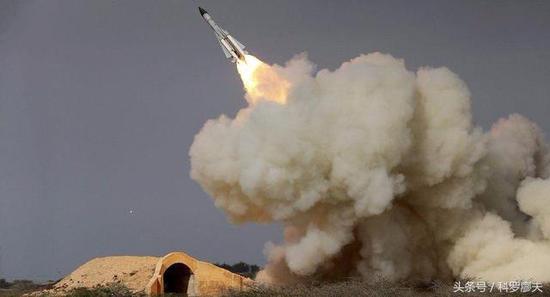
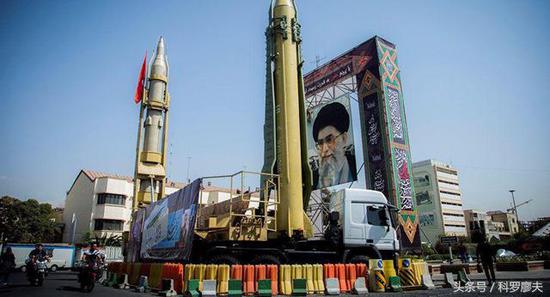
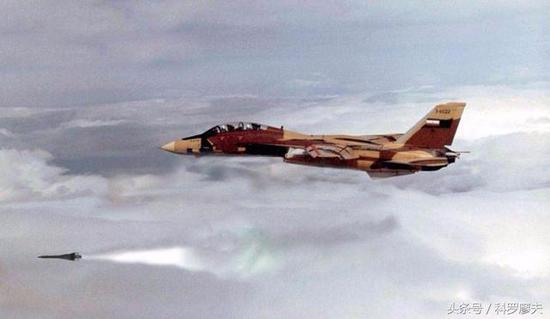
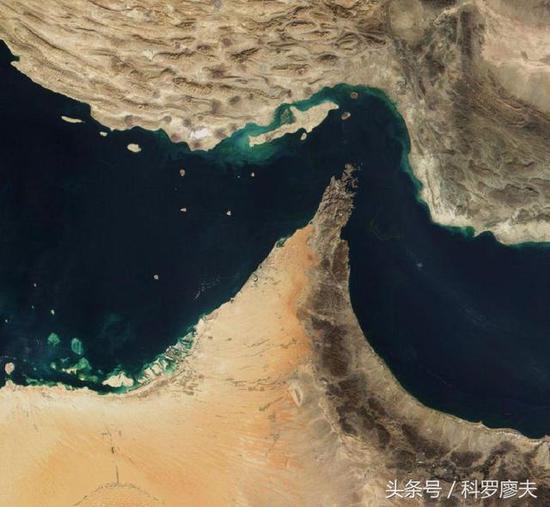
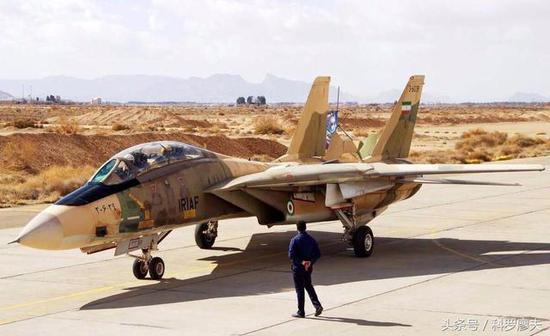
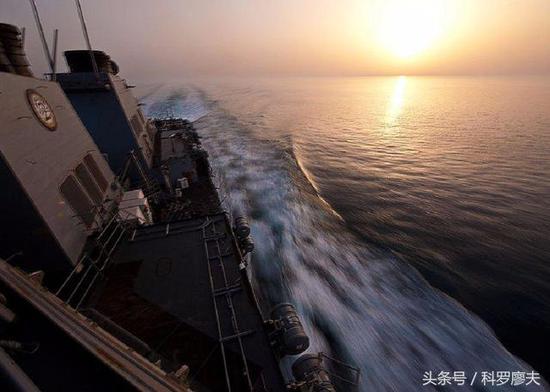
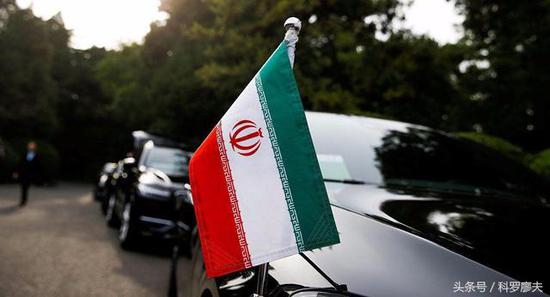

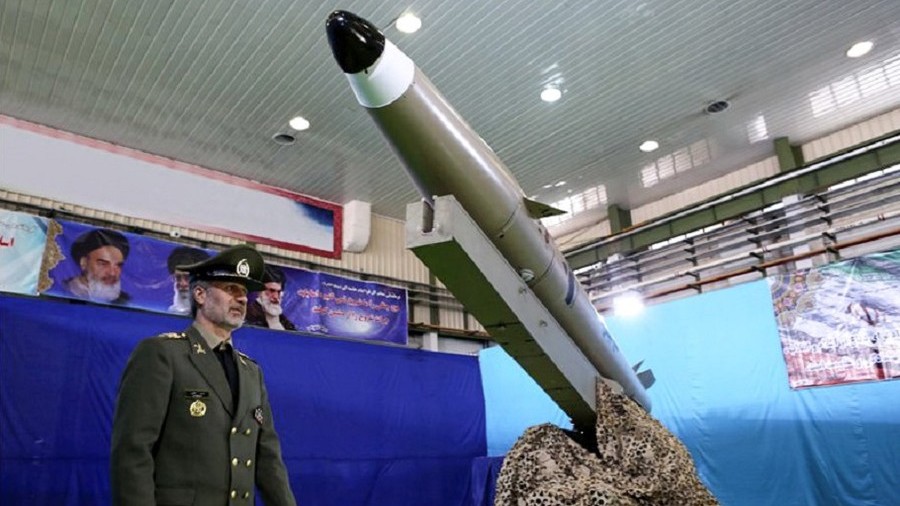
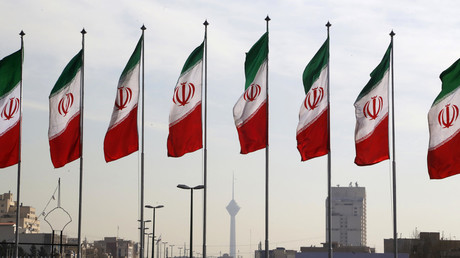 Trump says anyone trading with Iran will not trade with US as sanctions come into force
Trump says anyone trading with Iran will not trade with US as sanctions come into force